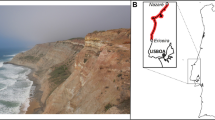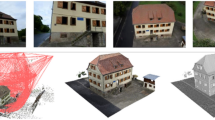Abstract
Many organizations are currently working on how to express and provide location information to services and applications in the Internet. Each of them basically specifies their own way. This raises a problem – the various location information formats, services and applications will not be interoperable in the Internet. Interoperability can be achieved if there is a common way of expressing location information. This paper therefore proposes a common data set and an extensible framework of expressing location information in the Internet. The design aims at bridging various existing/proposed location data representation formats, as well as meeting the requirements of existing/proposed location-aware services.
Similar content being viewed by others
References
IETF, Spatial Location BOF, http://www-nrc.nokia.com/ietf-spatial/
P.H. Dana, Coordinate Systems Overview, Department of Geography, University of Texas at Austin (1997), http://www.colorado.Edu/ geography/gcraft/notes/coordsys/coordsys_f.html
P.H. Dana, Geodetic Datum Overview, Department of Geography, University of Texas at Austin (1997), http://www.colorado.Edu/geography/ gcraft/notes/datum/datum_f.html
B.W. Parkinson and J.J. Spilker, Jr. (eds.), Global Positioning System: Theory and Applications, Vol. 1 (American Institute of Aeronautics and Astronautics, Inc., Washington, DC, 1996).
T. Rantalainen et al., Evolution of location services in GSM and UMTS networks, in: Proceedings of the 3rd International Symposium on Wireless Personal Multimedia Communications (WPMC'00), Bangkok, Thailand, November 2000, pp. 1027-1032.
3rd Generation Partnership Project, Technical Specification Group Core Network, Universal Geographical Area Description (GAD), Release 1999, Technical Specification, 3G TS 23.032 V3.1.0, March 2000.
Definition of aMobile Location API, Contribution to Location Interoperability Forum (LIF), API Specification, v. 0.2, June 2000.
R. Lake and A. Cuthbert (eds.), Geography Markup Language (GML) v1.0, OGC Document Number: 00-029, May 2000, http://www. opengis.org/techno/specs/00-029.pdf
Sekiguchi et al., NaVigation Markup Language (NVML), W3C Note, August 1999, http://www.w3.org/TR/NVML
K. Hiroyuki and K. Tomihisa, POIX: Point Of Interest eXchange Language Specification, W3C Note, June 1999, http://www.w3.org/ TR/poix
A. Daviel, Geographic registration of HTML documents, Internet draft, work in progress, April 2000, http://geotags.com/geo/draft-davielhtml-geo-tag-03.txt
A. Daviel, Geographic extensions for HTTP transactions, Internet draft, work in progress, April 2000, http://geotags.com/geo/draft-daviel-httpgeo-header-02.txt
P. Bennett, The NMEA FAQ, version 6.3, April 2000, http://vancouverwebpages. com/pub/peter/nmeafaq.txt
Internet Mail Consortium, vCard - The Electronic Business Card Version 2.1, September 1996, http://www.imc.org/pdi/vcard-21.txt
F. Dawson and T. Howes, vCard MIME Directory Profile, IETF RFC 2426, September 1998, http://www.imc.org/rfc2426
F. Dawson and D. Stenerson, Internet Calendaring and Scheduling Core Object Specification (iCalendar), IETF RFC 2445, November 1998, http://www.imc.org/rfc2445
C. Davis et al., A Means for Expressing Location Information in the Domain Name System, IETF RFC 1876, January 1996, ftp://ftp.funet. fi/pub/doc/rfc/rfc1876.txt
R. Mahy, A Simple Text Format for the Spatial Location Protocol (SLoP), Internet draft, work in progress, July 2000, http://search.ietf. org/internet-drafts/draft-mahy-spatial-simple-coord-00.txt
M. Wolf and C. Wicksteed, W3C Note, Date and Time Formats, September 1997, http://www.w3.org/TR/1998/NOTE-datetime-19980827
M. Kuhn, A Summary of the International Standard Date and Time Notation, http://www.cl.cam.ac.uk/~mgk25/iso-time.html
Bray et al., Namespaces in XML, in: World Wide Web Consortium, January 1999, http://www.w3.org/TR/1999/REC-xml-names-19990114
Adams et al., Modularization of XHTML™, in: World Wide Web Consortium, October 2000, http://www.w3.org/TR/2000/CR-xhtmlmodularization-20001020/xhtml-modularization-20001020.html
Author information
Authors and Affiliations
Rights and permissions
About this article
Cite this article
Korkea-aho, M., Tang, H. A Common Data Set and Framework for Representing Spatial Location Information in the Internet. Cluster Computing 5, 389–397 (2002). https://doi.org/10.1023/A:1019712305191
Issue Date:
DOI: https://doi.org/10.1023/A:1019712305191




